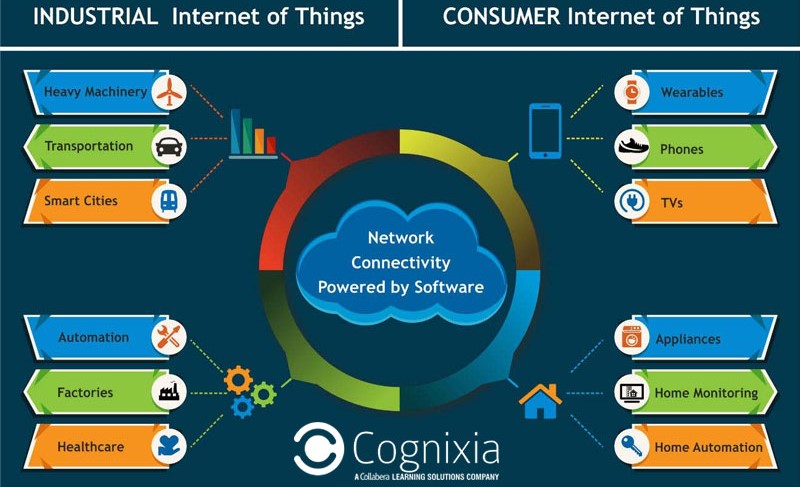Industrial Internet of Things (IIoT) is the same as the consumer IoT on a factory floor is one of the biggest confusions. It is quite a common confusion to happen given the fact that IIoT and consumer IoT have “Internet of Things” familiar to them. Although, it would be naive to compare IoT-enabled smartwatch or home security system with Industrial IoT. There are some devices which are present in a factory environment and must understand that the rules of IIoT are far more stringent than consumer IoT.

Some of these requirements are listed below:
- Autonomous Control: There is one significant difference between consumer IoT and IIoT that is IoT depends on communication with humans whereas IIoT is based on the ability to process without human intervention. There are myriad reasons for this, such as the callous industrial environment, the need for quick and frequent actions in a reliable manner, which can get difficult for people to handle. Besides the human-free operation, it is necessary for IIoT to be autonomous for self-configuration and self-securing.
- Peer to Peer Operation: While consumer IoT depends on the cloud or server-mediated interaction, most of the IIoT situations do not need those and more so can’t sustain an interaction with a server or cloud.
By 2023, Size of Industrial IoT Market Will Grow USD 232.15 Billion and CAGR 8.06%: Zion Market Research (GlobeNewswire)
- Industrial-Strength Reliability: Reliability cannot be compromised by a lot of industrial settings. If your IoT enabled-security system is corrupted for a while, then it can prove to be a hassle. However, if an automated train switching system fails – then it could be a matter of life or death.
- Resilience in the face of failures: There are certain technical requirements which fall under this head such as packet recovery, real-time application responsiveness, failure resistance vis-a-vis keeping single points of failure at bay, and detection of duplicate packets.
- Old versus New: Majority of consumer IoT applications involve relatively newer devices. Industrial automation has existed for a very long time, and this is the reason behind billions of legacy devices working on different control networks, following numerous protocols which have grown to meet the requirements of particular environments especially those which don’t intercommunicate. The IIoT solutions should be able to evolve existing devices and applications simultaneously with the new ones.
- Connectivity – Wired & Wireless: Consumer IoT relies mainly on wireless networks whereas Industrial IoT is not pro-wireless. Several factors such as dust, smoke, extreme temperatures, high decibel sounds, vibrations and underground locations – decrease the probability of accessing a wireless signal which makes them a risky option for some IIoT applications. This is why wired links are highly essential in an IIoT environment.
- Scalability: Ability to scale to thousands of nodes spread across multiple links is vital in an IIoT environment.
Various market researchers have forecasted that in the next few years, IIoT will move way ahead of IoT in scope and market value, given the fact that certain conditions are fulfilled.
At present, the Industrial System uses the Internet and internal IP networks to connect, via gateways. There have to be custom provisions and programs to offer the required data to enterprise systems. The gateways, however, limit the information which can pass back and forth. It gets tedious to evolve its configuration so that it may sustain new requirements. When it comes to industrial networks, IP addressing will shift from the gateway to field bus level and gateway functionality such as translating the data into common formats and eventually integrate them on chips. During that time, the dependency on routers for connecting gateways will be higher as compared to portals.
In an IIoT environment, there is a significant need for multiprotocol and multimedia platforms to carry out control networking using Internet Protocol all through to the end device. These are some of the primary differences between consumer IoT and IIoT which one needs to understand before starting work in an Internet of Things environment.
Cognixia provides one of the finest training programs on IoT and is acknowledged as one of the premier academies for the Internet of Things. Our course structure is such that it takes you through the entire ecosystem of IoT and prepares you for real-time jobs. IoT is one of the most popular skills of our times and promises a flourishing career. If the world of IoT appeals to you and you aspire a career in it, then enrol in Cognixia’s IoT Training today. For further information, you can write to us

